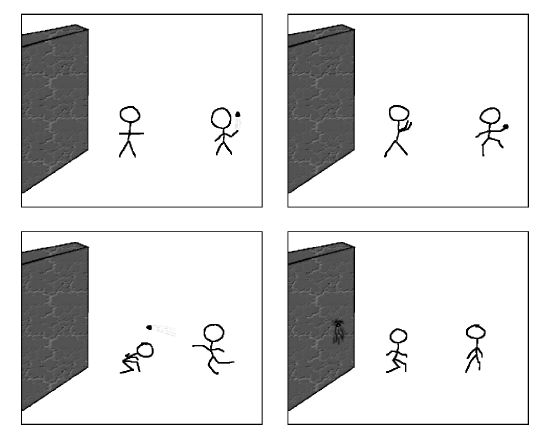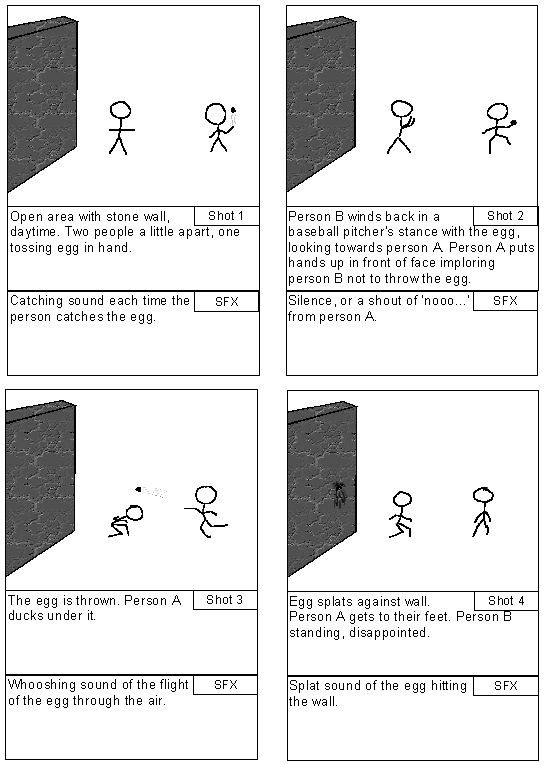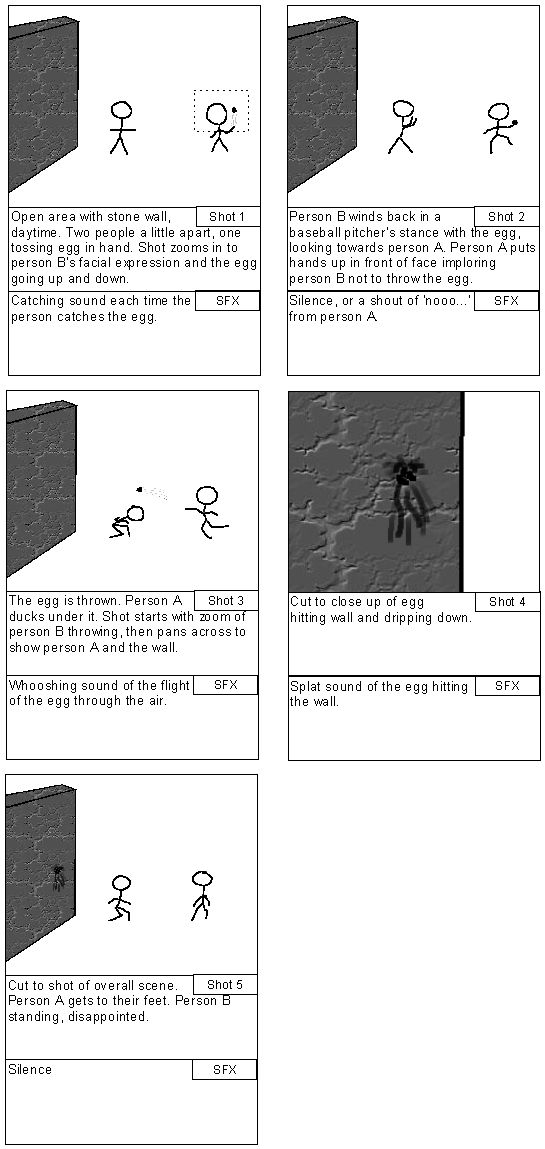Storyboarding
Storyboarding is a technique used in the process of producing many major movies. Most people nowadays have become so desensitised to major blockbuster movies with special effects that they don’t think about how the effects could possibly have been made. However, a heck of a lot of work has gone into planning each scene, and one of the processes used is storyboarding. In its simplest form, a storyboard is a sequence of still images arranged in the order that the movie will eventually be shown.
A normal two-hour film with 24 frames per second has approximately 170,000 individual frames! However, the film’s storyboard does not have that many images. Instead, the storyboard captures the important bits of each scene. For instance, say I wanted to make a movie of a stick figure ducking an egg thrown at him, and the egg splattering on the wall behind him. I’d only need to depict a few of the images to get the overall ‘feel’ of the scene.
I am probably the world’s worst artist, but even I am able to draw a few images that should (I hope) give the viewer a good idea of the story.

Take a look at these four images. One thing about them is that there’s no order specified. However, from looking at what’s happening in them, it becomes fairly clear that the story starts at the top left frame, moves to the top right frame, then to the bottom left frame, then to the bottom right frame.
However, so far it’s a pretty skimpy and simple storyboard. There’s lot of other information you can add to a storyboard. For instance, we can add information about the sound effects - the ‘SFX’. We can also add information about the type of shot - a normal one, a wide-screen one, a close-up one, a zooming-in or out one, a panning one (scanning sideways with the camera), or many other types.

So now we’ve got SFX and shot descriptions. However, notice that all the shots are the same - we’ve just got the basic whole-scene camera shot. One of the most important things to do is use a variety of shots to better get the movie’s message across. So what could we do in this story?
Well, in the first slot, we could start with an image of the whole scene, and then zoom in on person B, to focus on his face and the egg as he repeatedly tosses it and catches it. We can create the effect of him having an egg, but not quite knowing what to do with it. Whilst still zoomed in on his face, his expression can change to an ‘evil smile’, telling us that he’s thought of a devious use for the egg. In shot three we can zoom in on the thrower, then pan to follow the egg as it flies through the air and over person A’s head. Then in shot four, we can cut to a close up of the egg splattering against the wall, before cutting back to the overall scene. You might also edit the existing descriptions a little to see if you can improve them.

Click here to move on to the next topic: What the storyboard is useful for